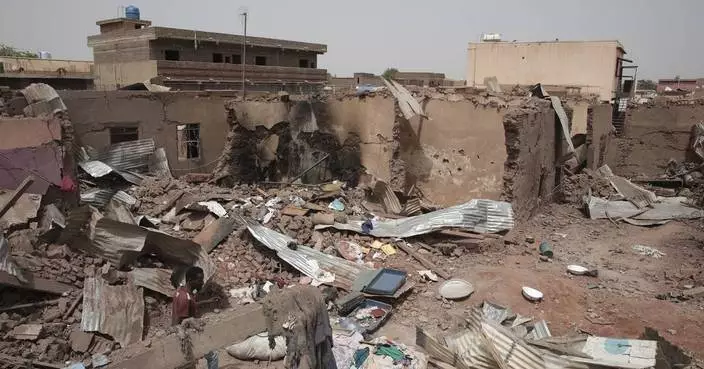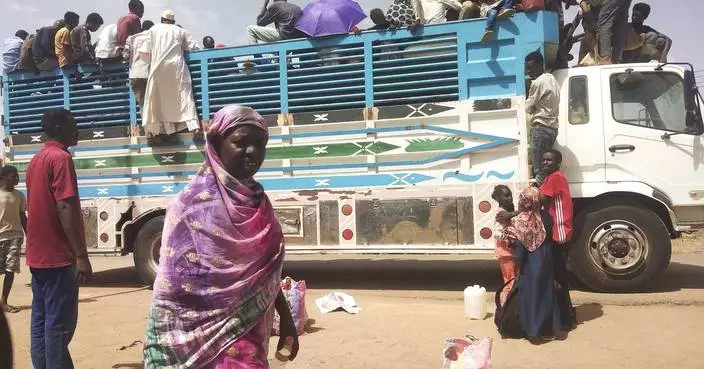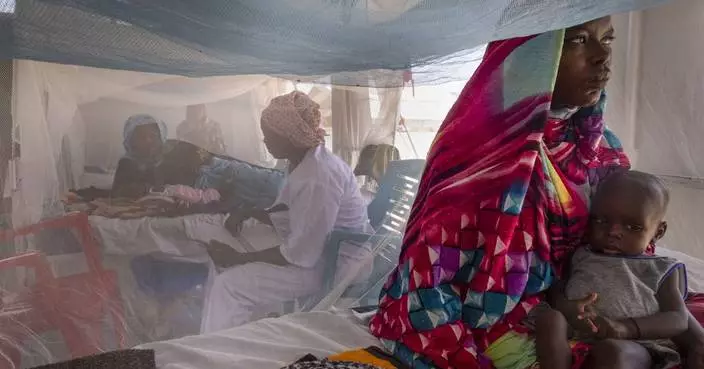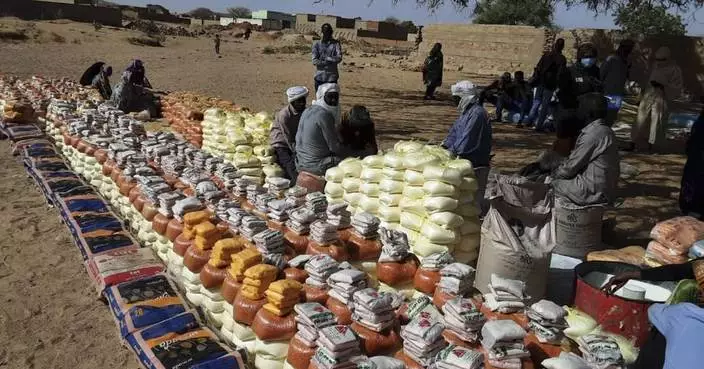Sudan's protest movement accepted an Ethiopian roadmap for a civilian-led transitional government, a spokesman said on Sunday, after a months-long standoff with the country's military rulers.
Ethiopia has led diplomatic efforts to bring the protest and military leaders back to the negotiating table, after a crackdown against the pro-democracy movement led to a collapse in talks. According to protest organizers, security forces killed at least 128 people across the country, after they violently dispersed the sit-in demonstration outside the military's headquarters in the capital, Khartoum, earlier this month. Authorities have offered a lower death toll of 61, including three from the security forces.
Yet it appeared that protest leaders, represented by the Forces for the Declaration of Freedom and Change, were open to the Ethiopian initiative as a way out of the political impasse.
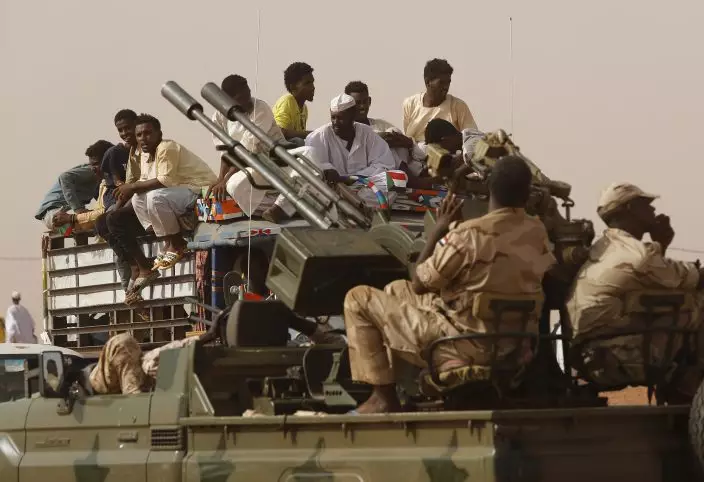
Sudanese supporters of Gen. Mohammed Hamdan Dagalo, the deputy head of the military council, sit on the top of a truck in front of soldiers from the Rapid Support Forces unit, during a military-backed tribe's rally, in the East Nile province, Sudan, Saturday, June 22, 2019. Sudan's protest leaders say they are meeting with an Ethiopian envoy over proposals to resume negotiations with the ruling military council. (AP PhotoHussein Malla)
Ahmed Rabie, a spokesman for the Sudanese Professionals' Association which is part of the FDFC, told The Associated Press that the proposal included a leadership council with eight civilian and seven military members, with a rotating chairmanship. All the civilians would come from the FDFC, except for one independent and "neutral" appointee, he said.
Rabie said that the roadmap would build on previous agreements with the military. These include a three-year transition period, a protester-appointed Cabinet and a FDFC-majority legislative body.
Rabie added that protest leaders would also discuss with the Ethiopian envoy, Mahmoud Dirir, the possibility of establishing an "independent" Sudanese investigation. Previously, the FDFC had said it would only resume talks with the military if it agreed to the formation of an international commission to investigate the killings of protesters.
The ruling military council has so far rejected the idea of an international probe, and says it has started its own investigation, in parallel with that of the state prosecutor.
The FDCF said Saturday said their approval of the Ethiopian plan "pushes all the parties to bear their responsibilities" to find a peaceful solution.
It urged the military council to accept the plan "in order to move the situation in Sudan" forward.
The military council did not immediately say whether it would also agree to the Ethiopian roadmap. A spokesman for the council did not immediately answer calls seeking comment.
UNITED NATIONS (AP) — Nearly 282 million people in 59 countries suffered from acute hunger in 2023, with war-torn Gaza as the territory with the largest number of people facing famine, according to the Global Report on Food Crises released Wednesday.
The U.N. report said 24 million more people faced an acute lack of food than in 2022, due to the sharp deterioration in food security, especially in the Gaza Strip and Sudan. The number of nations with food crises that are monitored has also been expanded.
Máximo Torero, chief economist for the U.N.'s Food and Agriculture Organization, said 705,000 people in five countries are at Phase 5, the highest level, on a scale of hunger determined by international experts — the highest number since the global report began in 2016 and quadruple the number that year.
Over 80% of those facing imminent famine — 577,000 people — were in Gaza, he said. South Sudan, Burkina Faso, Somalia and Mali each host many thousands also facing catastrophic hunger.
According to the report’s future outlook, around 1.1 million people in Gaza, where the Israel-Hamas war is now in its seventh month, and 79,000 in South Sudan are projected to be in Phase 5 and facing famine by July.
It said conflict will also continue to drive food insecurity in Haiti, where gangs control large portions of the capital.
Additionally, while the El Nino phenomenon peaked in early 2024, “its full impact on food security – including flooding and poor rain in parts of east Africa and drought in southern Africa, especially Malawi, Zambia and Zimbabwe – are like to manifest throughout the year.”
U.N. Secretary-General Antonio Guterres called the report “a roll call of human failings,” and that “in a world of plenty, children are starving to death.”
“The conflicts erupting over the past 12 months compound a dire global situation,” he wrote in the report's foreword.
Guterres highlighted the conflict in the Gaza Strip, as the enclave holds the highest number of people facing catastrophic hunger. There is also the year-old conflict in Sudan, which has created the world's largest internal displacement crisis “with atrocious impacts on hunger and nutrition,” he added.
According to the report, over 36 million people in 39 countries and territories are facing an acute hunger emergency, a step below the famine level in Phase 4, with more than a third in Sudan and Afghanistan. It's an increase of a million people from 2022, the report said.
Arif Husain, the U.N. World Food Program’s chief economist, said every year since 2016 the numbers of people acutely food insecure have gone up, and they are now more than double the numbers before the COVID-19 pandemic.
While the report looks at 59 countries, he said the target is to get data from 73 countries where there are people who are acutely food insecure.
Secretary-General Guterres called for an urgent response to the report’s findings that addresses the underlying causes of acute hunger and malnutrition while transforming the systems that supply food. Funding is also not keeping pace with the needs, he stressed.
“We must have the funding, and we also must have the access,” WFP’s Husain said, stressing that both “go hand-in-hand” and are essential to tackle acute food insecurity.
The report is the flagship publication of the Food Security Information Network and is based on a collaboration of 16 partners including U.N. agencies, regional and multinational bodies, the European Union, the U.S. Agency for International Development, technical organizations and others.
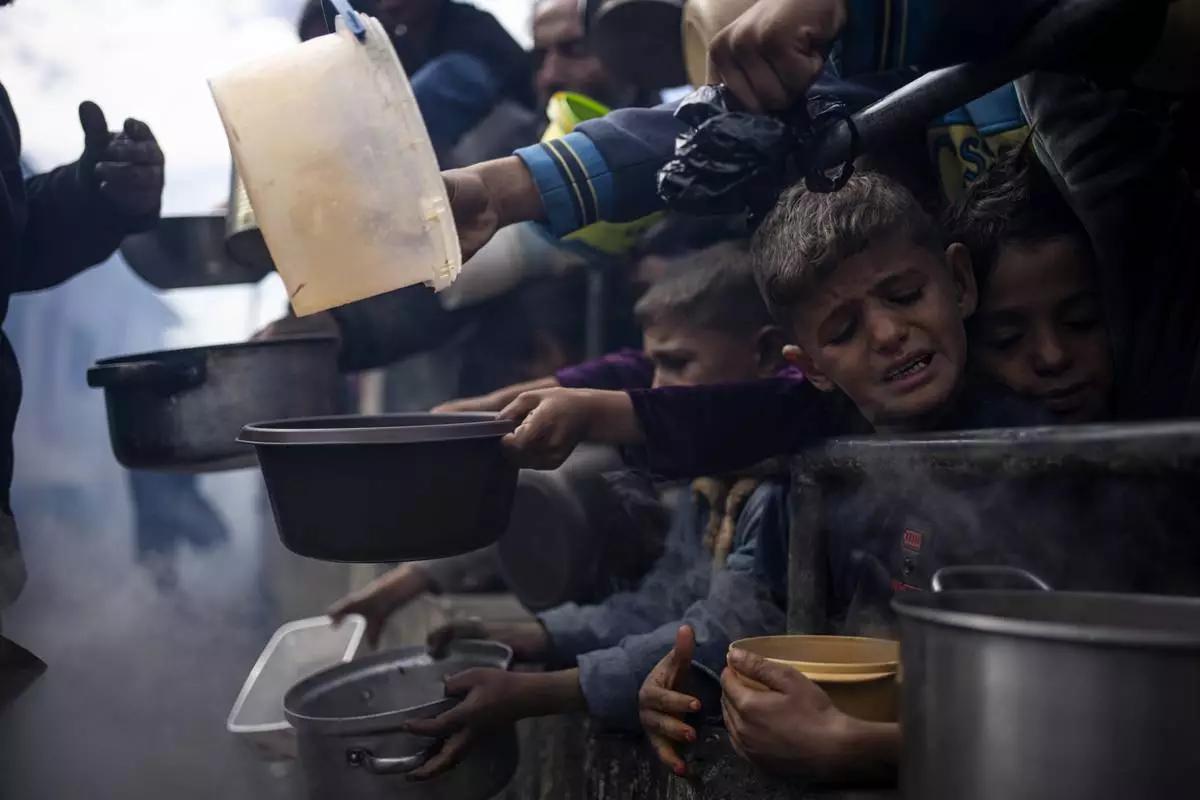
FILE - Palestinians line up for a meal in Rafah, Gaza Strip, Friday, Feb. 16, 2024. According to the Global Report on Food Crises released Wednesday, April 24, nearly 282 million people in 59 countries suffered from acute hunger in 2023, with war-torn Gaza the territory with the largest number of people facing famine. (AP Photo/Fatima Shbair, File)







